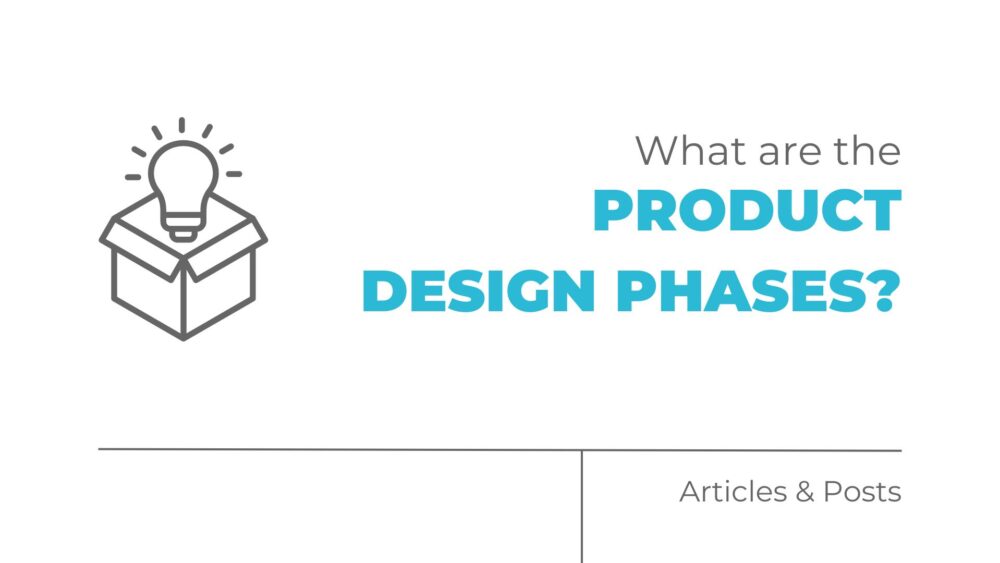Behind every sleek smartphone, cozy armchair, and user-friendly app, there’s a detailed process that turns ideas into the stuff we use every day.
This journey, known as the product design process, involves several phases that each play a role in creating products that make our lives easier and more enjoyable.
In this post, we’ll explore the different phases of product design, the importance of each step, and how to move smoothly between them.
What Are the Different Phases of Product Design?
The product design phases are structured to guide teams from the initial idea to the final product.
Here’s a breakdown of the key phases:
Idea Generation and Market Research
This initial phase involves brainstorming sessions where creative ideas are brought to the table.
Teams conduct thorough market research to understand consumer needs, current market trends, and gaps that the new product could fill.
This phase sets the foundation for the entire design process by identifying the direction and potential of the product.
Concept Development and Validation
With a solid idea in hand, the next step is to develop it into a workable concept.
This involves creating preliminary designs and rough sketches, which are then refined through team discussions and initial feedback.
The goal is to validate the concept, making sure it aligns with market needs and company goals before moving forward.
Detailed Design and Engineering
During this phase, the rough sketches are transformed into detailed designs.
Engineers and designers collaborate to create precise models using CAD software, making sure the product is not only visually appealing but also functional and manufacturable.
This step translates the concept into a feasible design ready for prototyping.
Prototyping and Iteration
Prototyping involves building a tangible or digital model of the product.
This phase is essential for testing the design’s functionality, usability, and aesthetics.
Feedback from prototype testing is used to make necessary adjustments, leading to iterative improvements.
This hands-on phase helps identify potential issues early and refine the product before mass production.
Comprehensive Testing and Quality Assurance
Once the prototype is refined, it undergoes extensive testing to make sure it meets all required standards and performs as expected.
This phase includes various types of testing, such as user testing, stress testing, and compliance checks with industry standards.
The aim is to validate the product’s design and functionality thoroughly before proceeding to production.
Production Planning and Execution
After successful testing, the focus shifts to production.
This phase involves setting up manufacturing processes, securing materials, and coordinating with suppliers.
Detailed production plans are created to make sure the manufacturing process runs smoothly and efficiently, readying the product for market launch.
Market Launch and Distribution
With production underway, the next step is to launch the product.
This involves developing marketing strategies, planning distribution channels, and preparing for the product’s introduction to the market.
Effective marketing and strategic distribution are key to a successful product launch, making sure it reaches the target audience.
Post-Launch Review and Continuous Improvement
The final phase involves monitoring the product’s performance post-launch.
Customer feedback is gathered to assess satisfaction and identify any issues.
This feedback is invaluable for making improvements to the current product and informing the development of future products.
Continuous improvement keeps the product relevant and competitive in the market.
How Does Prototyping Fit into the Product Design Phases?
Prototyping plays a big role in bridging the gap between design and production.
It allows teams to visualize and test their ideas in a tangible form, providing critical insights into the product’s functionality and design.
By iterating on prototypes, teams can refine their designs, address potential issues early, and make sure the final product meets all user requirements and quality standards.
Prototyping is not just a single phase but an ongoing process that informs each subsequent step, from concept development to final production.
How Do You Transition from One Phase to Another in Product Design?
Transitioning smoothly from one phase to another in product design requires meticulous planning and coordination.
Here are some strategies to make transitions seamless:
1. Effective Communication
Maintain open lines of communication among all team members.
Regular updates, meetings, and collaborative tools help keep everyone aligned and aware of the project’s progress.
2. Thorough Documentation
Keep detailed records of design changes, testing results, and feedback.
This documentation serves as a valuable reference for future phases and helps track the project’s development.
3. Regular Milestone Reviews
Conduct milestone reviews to assess progress and make informed decisions about moving to the next phase.
Involve key stakeholders in these reviews to address any concerns and consider all aspects.
4. Adaptability and Flexibility
Be prepared to adapt to new information and feedback.
Flexibility is essential in the iterative design process, allowing teams to make necessary adjustments and improvements as they move forward.
At the End of the Day
Understanding and efficiently navigating the phases of product design is essential for creating successful products.
By focusing on clear communication, thorough documentation, regular reviews, and adaptability, teams can bring innovative, high-quality products to market.
Each phase of the process helps transform an idea into a product that meets user needs and stands out in the market.


Comments are closed.